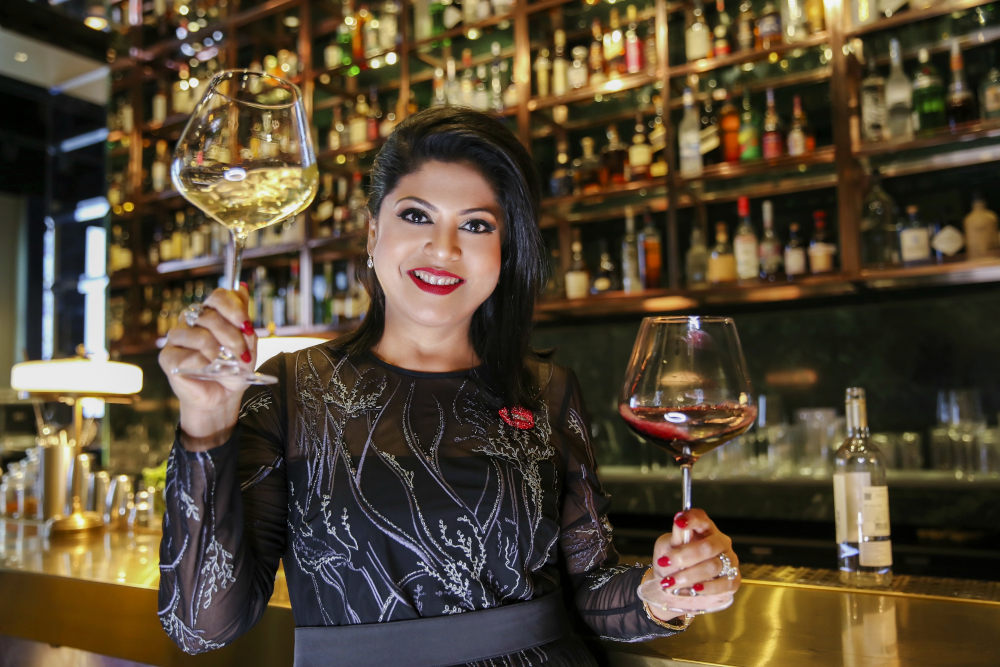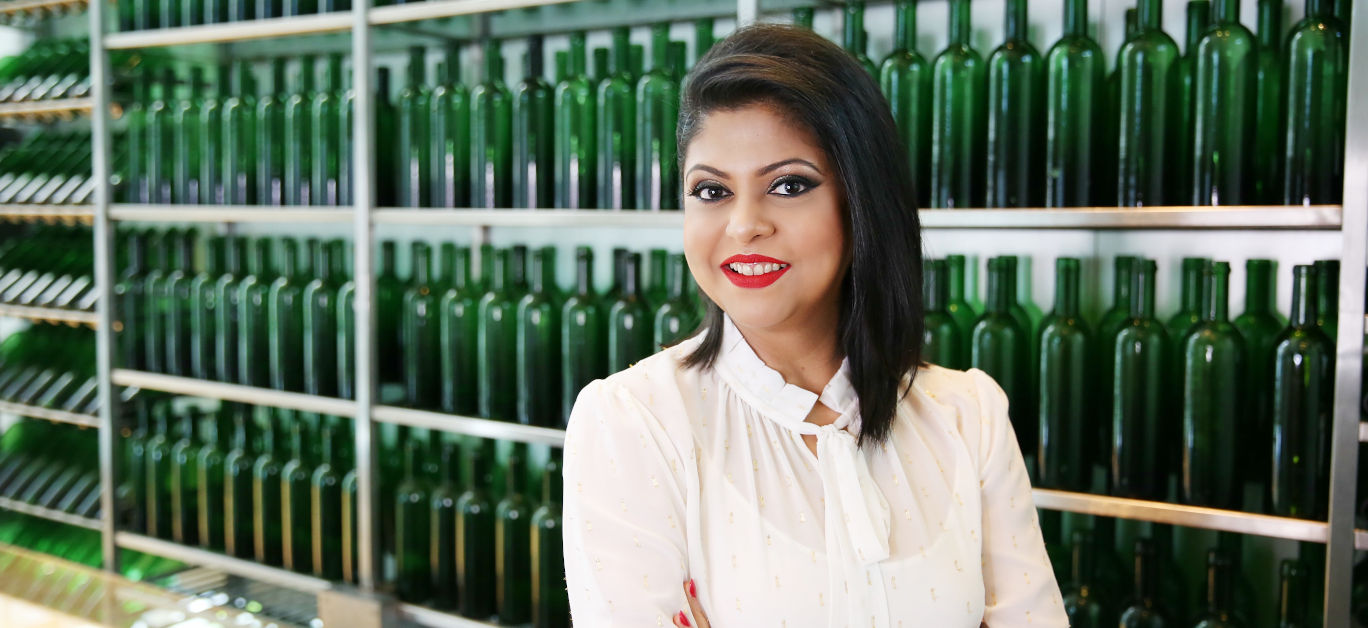Words by Roshna Chandran
Master of wine Sonal Holland was chosen as programme ambassador for Southern Australian wine in India in 2021. Apart from running her own academy and a chain of wine retail outlets, Sonal has managed to gauge a deep understanding of the wine market. She talks to LLM – Luxury Lifestyle Magazine about the current wine market scenario and how exporters, importers and retailers in India are all gearing up for a whole new range of wine experiences.
A cloud with a silver lining
The pandemic has no doubt fluctuated market sales during its first wave, but surprisingly new doors have opened to allow retailers to evolve through online channels with home deliveries. According to Sonal: “Maharashtra and Delhi contribute 60 per cent of the wine trade in India and with Bangalore, it’s 75 per cent. Including Goa takes it to 85 per cent but the other states that are comparatively smaller, such as Hyderabad, Chennai and Kolkatta contribute very little individually.”
India, being a tough market for wine retailers, especially with strict advertising bans on alcohol, has seen some increase through e-commerce sales. Brand owners and companies have begun educating through their websites, but all this comes with a new set of challenges and possible malpractices. Retailers in big cities like Mumbai, Delhi and Bangalore, have begun churning out sophisticated experiential outlets and exploring the possibility of hosting wine courses in their endeavour to educate consumers.
“Despite the dip, overall retail of wine has been good, there has been a 15 per cent growth year-on-year. This is mainly due to the fact that retail has grown on its own, despite the fall in restaurant trade, and has retained a dominant position in the overall consumption pie – thereby proving that domestic wine consumption is now on steady ground,” Sonal explained.

Perceived image of wine
With a total consumption of 60-65 per cent of red wines, Sonal pointed out that red wine continues to be the most popular category. Consumers perceive red wine as healthy, smoother, with more flavour profile as compared to whites, which tends to be perceived as sharper or acidic on the palate.
“The imagery of red wine is stronger, i.e., when people think of lifestyle, they think of red wine first,” she said. “Having said that, rosé wines have also seen a huge uptake in the market, especially in the past one year in particular, with people looking for lighter, more easy-drinking wine styles in general, to drink at home. The availability of several brands of rosé wines in India, as a result, has improved substantially to cater to this growing demand.”
Scope of wine tourism
Sula vineyards have been dominant in the area of wine tourism in India and many more brands are trying to scale up to the same concept.
“I’m very bullish about wine tourism as a concept in India but unfortunately it is still under-developed,” she added. “I see a robust wine tourism industry in the next five years since Indians have become more and more affluent, well-travelled, very curious about wine and are eager to try new experiences. I have no doubt that the domestic wine tourism industry is going to flourish in years to come with several hospitality brands making a foray into oeno-tourism opportunities in India.”
According to Sonal, wine tourism opportunities will precede domestic wine consumption since India already has a booming tourism and hospitality background.
She explained: “Regardless of whether Indian wine will find its voice on the global diaspora, our understanding of how to provide top-notch hospitality can enable us to create an industry that is world-class. Wine tourism will not only educate consumers but also provide overall development of rural areas and employment opportunities, especially for women who occupy 80 per cent of the vineyard workforce.”

The booming Indian wine entrepreneurs
Several young wine brands have made their presence in the Indian market following the footsteps and success of major players. However, new entrepreneurs who have sprouted into the business lack the international exposure, winemaking know-how as well as hands-on experiences and marketing skills.
Sonal pointed out: “It is not the easiest industry to thrive in. The wine production industry is pretty capital-intensive, effort-intensive and intellectual property-intensive. Most people get into the business purely for the ego-trip.” She added: “People want to be known for owning a wine brand as it sounds pretty posh, but they end up making mistakes and bearing financial losses. Since there is so much lack of awareness, communicating about wine is a whole new industry on its own. I feel newcomers in the industry have to be in it for all the right reasons.”
Gearing up with Southern Australian wines
Sonal and her team, in partnership with the South Australian Trade and Investment Department in India, have embarked on a robust year-long program of education, creating awareness and solidifying business opportunities for South Australian Wines in India.
South Australia is a front-runner in the New World of wines with a 200-year-old winemaking legacy, 13 different wine regions to showcase diversity of wine styles and stories of legendary wine producers in the making.

Sonal said: “We will tell these amazing stories to the Indian trade and consumers through tasting events, digital platforms and media. When people think of South Australian wines, they naturally think of Barossa Shiraz and perhaps Chardonnay from Adelaide Hills. We are looking forward to expanding the presence of South Australian wines in India and placing this exciting region among the most sought-after wines in the Indian wine market. There is so much for consumers to explore – like the finely-aged Riesling from Clare Valley, delicious Grenache from some of the oldest vines in the world coming from Barossa and intense Coonawarra Cabernet Sauvignon that can rival some of the best in the world.”
She further pointed out that premium wine consumers in India, prefer richer, bolder and heavier styles of wines. Deep coloured styles are perceived to be more expensive. From crisp and dry to rich aromatic whites; juicy rosé to sparkling wines, elegant to deep reds, South Australia has an exciting range of wines for all occasions and budgets.”
Challenges
“Bringing more consumers to wine and making them wine-loyalists has been the biggest challenge,” explained Sonal. “There are nearly 2,500 imported wine labels available in the country, but the consumer keeps trying the same wine over and over again, mainly because of lack of awareness and brand familiarity towards a particular wine,” she lamented.
“Indian wine entrepreneurs need to be savvier and make their marketing appealing to a younger audience, not just older drinkers. Wine cannot be restricted to just formal dinners; communicating about wine, both at on-ground events and through digital platforms, through storytelling, in a fun and not intimidating way is equally important. We need to make good quality wine more approachable, affable, affordable and available,” she concluded.






















